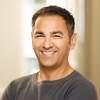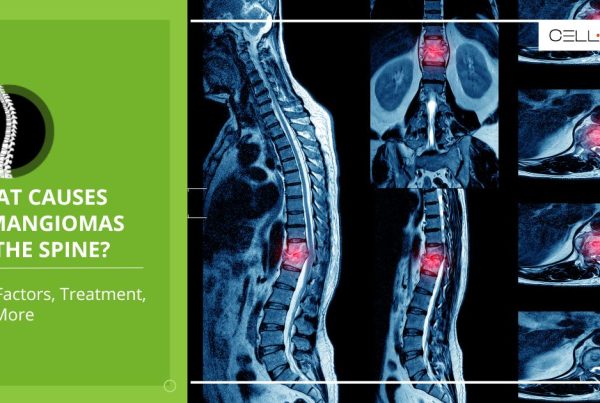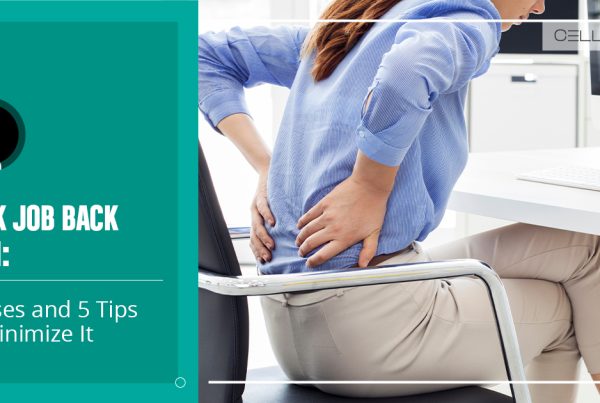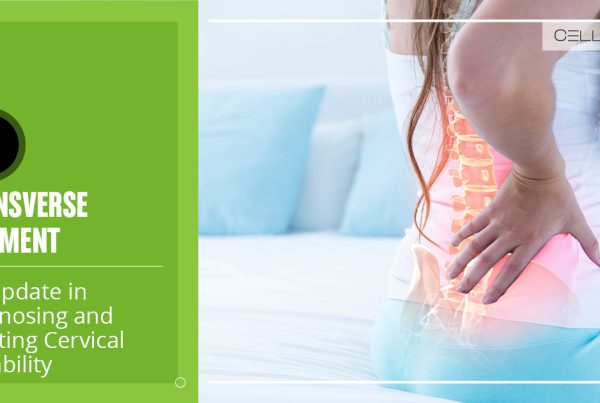Published on: March 30, 2020 | Updated on: February 3, 2025
The mobility of the neck, as well as muscle and nerve function throughout the body, are all dependent on a healthy cervical spine. The cervical lordosis is made up of seven vertebrae that are found inside the anatomy of the neck.
This form provides for a proper range of motion in the head and neck while also supporting the weight of the head. An irregular shape can cause discomfort, pain, and even health problems.
Do you have cervical lordosis?
Fill out the form below to schedule your FREE virtual consultation
What Is Cervical Lordosis?
Our spine bends slightly when we use the neck, upper, and lower back. The lordotic (neck and lower back) and kyphotic (upper back) curves are what give your spine its S shape (upper back).
They benefit your body in the following ways:
- Absorbs shock
- Supports the head’s weight
- Aligns your head over your pelvis
- Maintains and stabilizes the structures of the neck
- Bend and move with flexibility
Your natural lordotic curvature, which is normal, is referred to as lordosis. However, lordosis, or swayback, occurs when your curvature curves too far inward. Lordosis is a condition that affects the lower back and neck. Excessive pressure on the spine might result, producing pain and discomfort.
If it’s severe and untreated, it might impair your ability to move. Treatment for lordosis is determined by the severity of the curvature and the cause of lordosis. If your lower back curvature reverses as you bend forward, it’s not a medical emergency.
Physical treatment and everyday exercises can help you manage your illness. However, if the curvature remains the same as you bend forward, you should visit a doctor.
What Causes Cervical Lordosis?
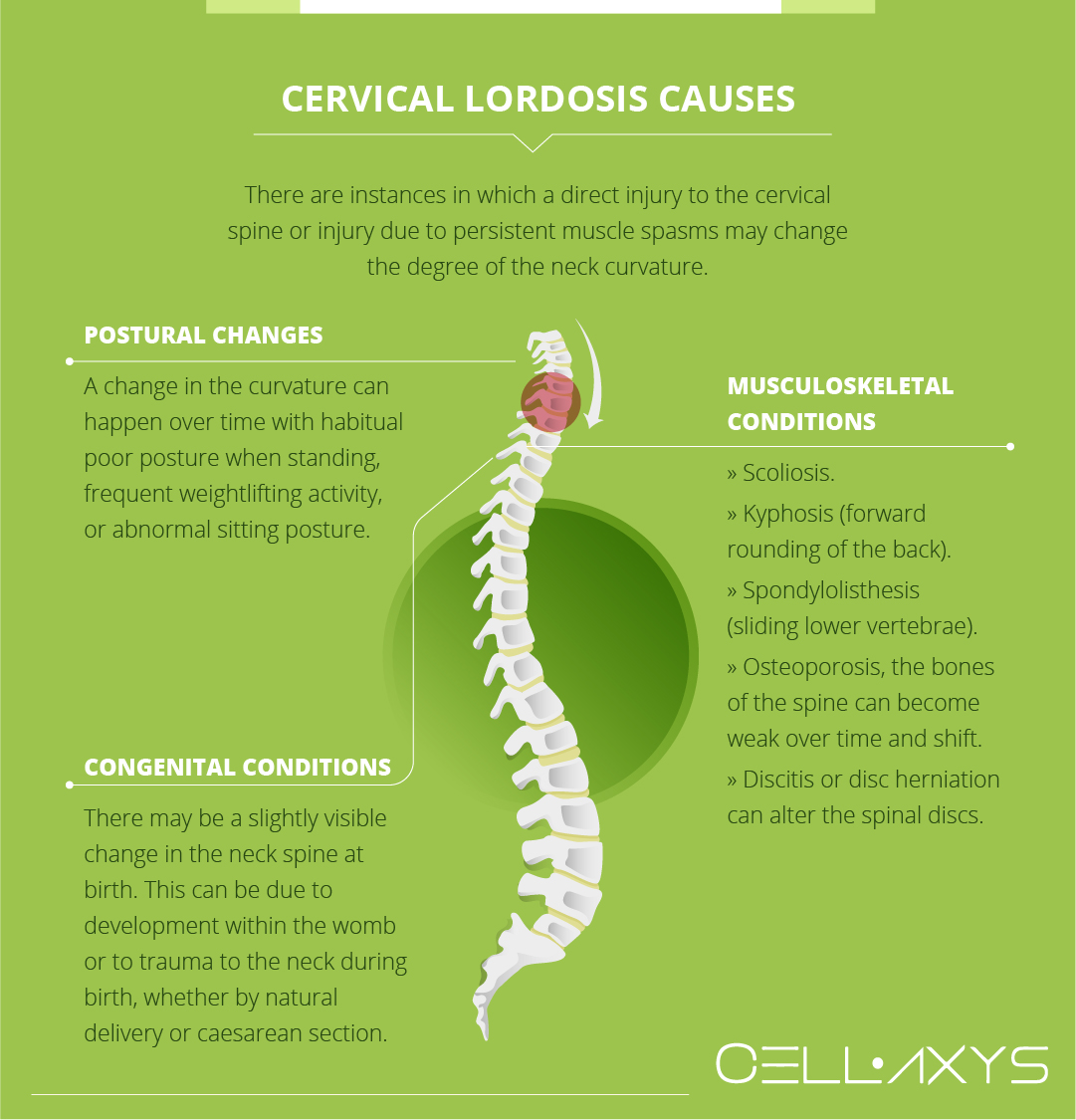
The cervical lordosis condition can occur to anyone of any age. There are instances in which a direct injury to the cervical spine or injury due to persistent muscle spasms may change the degree of the neck curvature. More common causes of cervical lordosis are:
- Postural changes: A change in the curvature can happen over time with habitually poor posture when standing, frequent weightlifting activity, or abnormal sitting posture.
- Congenital conditions: There may be a slightly visible change in the neck spine at birth. This can be due to development within the womb or trauma to the neck during birth, whether by natural delivery or cesarean section.
- Musculoskeletal conditions: Medical conditions affecting the spine can cause a curvature change. This may be seen with scoliosis, kyphosis (forward rounding of the back), and spondylolisthesis (sliding lower vertebrae). In osteoporosis, the bones of the spine can become weak over time and shift, while the conditions of discitis or disc herniation can alter the spinal discs.
Symptoms of Cervical Lordosis
An excessive inward bend of the spine is the distinguishing feature of lordosis. The buttocks and stomach region may protrude depending on the location of lordosis. A person with lordosis may find it difficult to lie flat on the floor due to the curvature in their back.
In many circumstances, lordosis changes a person’s look but does not produce any symptoms. Severe lordosis, on the other hand, might result in:
- Neck or back pain
- Sciatica; a term used by doctors to describe discomfort that extends into the legs and foot
- Numbness or tingling
Occasionally, lordosis can result in a person losing control of their bladder or bowels, as well as abrupt, acute leg discomfort or paralysis. If this occurs, they should seek medical attention.
When to Seek Medical Attention
Much of the discomfort can be easily managed at home with pain medication and other techniques. However, a few symptoms should not be ignored, and if you experience them, you should consider a healthcare professional. These include the following.
- Persistent pain that persists over time can indicate degeneration or arthritis.
- Neurological symptoms, such as tingling, numbness, or weakness in the arms, hands, and shoulders, indicate nerve compression or damage.
- If you have difficulty performing basic daily activities such as lifting objects, working, or driving, this can indicate functional impairment.
Diagnosis of Cervical Lordosis
Because of the different degrees of cervical lordosis, a physical examination and a patient’s medical history may not be enough to provide a correct diagnosis. It’s possible that more X-rays and diagnostic screening may be necessary. As with degenerating discs, many examinations over time may reveal alterations in the spine and the specific reason.
Once a cervical lordosis diagnosis is made, treatment options are determined by the amount of the curvature and whether or not discomfort is present. To relieve any strain on the nerves and prevent additional curvature, postural physical therapy is frequently employed. Medication, compresses, focused exercises, or the use of a supportive device such as a neck brace can all be used to treat muscular spasms and related discomfort.
Reversal of Cervical Lordosis
The significance of effective therapy becomes clear when thinking of the difficulties that might occur from cervical lordosis. Treatment of the curvature, in addition to addressing bad posture, can help to avoid future spinal injuries.
The vertebrae are supposed to act as shock absorbers for the spine, and any degradation or change in location caused by cervical curvature might result in spinal damage. This is also evident in degenerative disc disease and joint disease.
Another danger of cervical lordosis is a disturbance of the brain’s vital nutrients and oxygen sources. Hypertension, discomfort, lethargy, nausea, dizziness, and even sleeplessness are all possible side effects.
Preventing disorders that affect the alignment of the spine, such as osteoporosis or the permanent use of a back or neck brace, can be as simple as paying attention to and taking care to avoid any aberrant curvature.
Exercises for Cervical Lordosis
You can use a variety of neck curvature exercises to aid with cervical lordosis. Working with a professional to verify you’re completing neck lordosis exercises appropriately is recommended.
If you’re practicing these exercises at home, monitor yourself for any sudden discomfort, pain, or tingling sensations.
If you have any of these symptoms, or any other unusual pain or discomfort, stop doing the exercises immediately and see your doctor. The goal of these at-home workouts is to aid in the rehabilitation process.
Seated chin nodding
- Place a cloth over the back of your neck and sit up straight.
- Keep both ends of the cloth in your hands.
- Look all the way down, then gently raise your eyes. Nodding your head up and down is comparable to this.
- Perform 1-2 sets of 8-10 repetitions.
You can use a resistance band in place of a towel.
Seated chin tuck
- Sit up straight and direct your eyes forward.
- Push your head back as far as you can comfortably with one hand on your chin.
- For 1-2 seconds, stay in this position.
- Move your neck backward and forwards slowly.
- Perform 1-2 sets of 8-10 repetitions.
Upper thoracic and shoulder extension
- Place a big towel beneath your back after rolling it up.
- Place the towel parallel to your upper thoracic spine and lie down. If you’re on a workout bench, this is the greatest way to do it.
- Lay with your arms at 90 degrees and slightly stretched out to the sides.
- Pull your shoulder blades together and keep them there for 1-2 seconds before relaxing.
- Perform 1-2 sets of 8-10 repetitions.
Treatment Options for Cervical Lordosis
The treatment of cervical lordosis depends on the patient’s condition and, of course, involves both non-surgical and surgical options.
Non-Surgical Approaches
Usually, the surgeon goes for the non-surgical approach first.
Physical therapy
Physical therapy strengthens the neck and shoulder muscles, which help support the overall cervical spine and improve posture. Therapy is beneficial for hyperlordosis, especially if the patient has muscle imbalances or posture issues.
The technique also involves proper sitting and standing to reduce neck strain, alleviate pain and stiffness, and improve mobility and flexibility.
Chiropractic Therapy
A chiropractor addresses misalignment by making regular adjustments, which reduces pressure on the patient’s nerves. The expert also conducts manual manipulation and cervical traction to reduce the compression and restore the normal position of the spine and neck.
Therapeutic Modalities
At times, a combination of treatments like heat therapy and electric stimulation is advised to reduce the pain and swelling.
Medication
NSAIDs like ibuprofen and naproxen may be given to reduce pain and inflammation.
For muscle spasms, muscle relaxants are prescribed to ease the tension in the neck and shoulders.
However, keep note that these pain medications only help manage the pain but have no effect on the condition itself.
Changes in Lifestyle
Often, doctors suggest supportive furniture like chairs with cervical and lumbar support.
You should also adjust the monitor or chair to bring it to eye level with your screen. Or limit the use of smartphones and other devices. This will help minimize neck exertion.
Furthermore, you can always incorporate exercises like yoga to improve flexibility and spinal curvature.
Lastly, maintain a healthy weight.
Surgical Intervention
At times, surgery is unavoidable. No matter how much you try the non-surgical treatments, if the condition has worsened or there is severe damage and nerve compression, you’ll have to go for surgery.
Usually, such a condition is characterized by persistent or debilitating pain that doesn’t go away with conservative treatments. There may also be a tingling or a numbing sensation and muscle weakness in the arms, which progressively worsens the spine curvature and instabilizes the individual.
In such a case, the doctor will advise surgical intervention. Either one of the three basic types of surgical procedures may be performed.
Spinal Fusion
When there is severe spine degeneration or hyperlordosis, the doctor may prescribe spinal fusion as it can help stabilize the affected vertebrae and join them.
Laminectomy
This procedure removes a part of the vertebra to relieve the pain and pressure.
Disc Replacement
An artificial disc replacement procedure can also restore the space between the vertebrae and help the patient regain mobility.
Orthobiologic Treatment for Cervical Lordosis
Regenerative medicine is gaining popularity in orthopedic, spine, and sports injuries. It includes orthobiologic treatments: cell-based and platelet-rich plasma (PRP) therapies. These methods are non-invasive, less painful, and have a shorter recovery period.
At CELLAXYS, we perform two types of orthobiologic treatment for cervical lordosis:
Platelet-rich Plasma (PRP) Therapy
PRP therapy draws blood from the patient’s body, processes the blood sample, and isolates platelets. These platelets are then reinjected into the injury site to promote healing. Platelets are healing components containing 10 Growth Factors that promote the growth of healthy tissues.
They also release chemical signals to attract healthy cells in the blood and produce fibrin, a sticky web-like scaffolding to support the development of new tissues.
PRP is a popular treatment for several sports-related injuries and is an outpatient procedure, meaning you can go home right after the process. The process is complete in about 45 minutes.
Cell-based Therapies
Also known as stem cell therapies, this treatment is one of the most effective solutions to treat pain associated with an abnormality in cervical lordosis. The cells are harvested from the patient’s body, processed, and reinjected into the injury site.
Depending on the condition, the doctor may opt for one of the two types of cell-based therapies:
- Minimally Manipulated Adipose Tissue (MMAT) Transplant: It involves harvesting healthy cells from your adipose (fat) tissue, processing them, and replacing them with damaged cells.
- Bone Marrow Concentrate (BMAC): This procedure involves reinjecting highly concentrated cells from the bone marrow into the injury site.
Both cell-based therapies are completed within 1.5 to 2 hours. Like PRP, they are also an outpatient procedure. The doctor uses live X-rays or ultrasounds to detect the exact transplant locations. According to orthopedics, advancements in regenerative treatments have allowed doctors to treat diseases like cervical lordosis.
Cervical Lordosis: Prevention Strategies
Preventing cervical lordosis abnormalities is possible. It requires focusing on spinal health and maintaining a healthy and active lifestyle that reduces pressure on the neck, shoulders, and spine muscles.
Always maintain good posture by keeping your feet flat on the ground, knees at a 90-degree angle, and back straight. Do not slouch when sitting.
- Always stand tall with your shoulders relaxed so your weight is evenly distributed on both feet.
- Avoid the tech neck or pushing your head forward when sitting on a laptop, computer, or online for long hours.
- Also, use the supportive pillow to maintain the cervical alignment and sleep on your back or side.
- Indulge in daily exercises like neck stretches to strengthen the muscle supporting the cervical spine.
- Also, avoid placing the phone between your ear and shoulder. Use a headset or the speaker instead.
- Avoid carrying heavy items or bags as they can stress you out and increase pressure on the neck and shoulders.
Living with Cervical Lordosis
Cervical lordosis can be managed over the long term, but it requires a combination of long-term strategies and regular health checks.
You should incorporate regular stretching and strengthening exercises into your daily routine and use supportive devices to maintain proper alignment.
Stay active and minimize the stress on the neck in all ways possible.
Remember, the more you tolerate pain and experience long-term discomfort, the more you can cause stress, frustration, and anxiety, so work on it. Join support groups and seek professional help if it affects your mental well-being.
Sources
Footnotes
- Borden AB, Rechtman AM, Gershon-Cohen J. The normal cervical lordosis. Radiology. 1960;74(5):806-9.
- McAviney J, Schulz D, Bock R, Harrison DE, Holland B. Determining the relationship between cervical lordosis and neck complaints. Journal of manipulative and physiological therapeutics. 2005;28(3):187-93.
- Been E, Shefi S, Soudack M. Cervical lordosis: the effect of age and gender. The Spine Journal. 2017;17(6):880-8.
- Harrison DE, Cailliet R, Harrison DD, Janik TJ, Holland B. A new 3-point bending traction method for restoring cervical lordosis and cervical manipulation: a nonrandomized clinical controlled trial. Archives of physical medicine and rehabilitation. 2002;83(4):447-53.
References
- What is lordosis, and what causes it?. Medical News Today. Accessed 9/5/2023.
- Lordosis (Swayback). Cleveland Clinic. Accessed 9/5/2023.
- What Causes Lordosis?. Healthline. Accessed 9/5/2023.
- Sway Back Posture. Physiopedia. Accessed 9/5/2023.
CELLAXYS does not offer Stem Cell Therapy as a cure for any medical condition. No statements or treatments presented by Cellaxys have been evaluated or approved by the Food and Drug Administration (FDA). This site contains no medical advice. All statements and opinions are provided for educational and informational purposes only.
Dr Pouya Mohajer
Author
Pouya Mohajer, M.D. is the Director of Spine and Interventional Medicine for CELLAXYS: Age, Regenerative, and Interventional Medicine Centers. He has over 20 years of experience in pain management, perioperative medicine, and anesthesiology. Dr. Mohajer founded and is the Medical Director of Southern Nevada Pain Specialists and PRIMMED Clinics. He has dedicated his career to surgical innovation and scientific advancement. More about the doctor on this page.
Dr Pejman Bady
Contributor
Dr. Pejman Bady began his career over 20 years ago in Family/Emergency Medicine, working in fast-paced emergency departments in Nevada and Kansas. He has served the people of Las Vegas as a physician for over two decades. Throughout this time, he has been met with much acclaim and is now the head of Emergency Medical Services in Nye County, Nevada. More about the doctor on this page.



